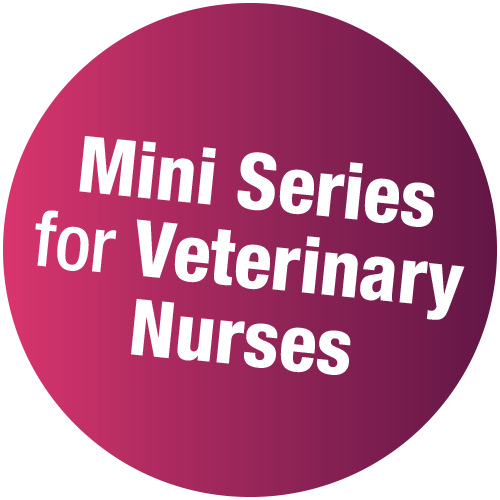MS110 – Managing Diabetic Patients – Nurses
£297.00 (+VAT)
12 months access to recordings and course materials is included. Please note that these are webinar recordings and not live events. Full details on how to access the Mini Series will be emailed to you.
- Join Nicola Ackerman BSc(Hons) RVN CertSAN CertVNECC VTS(Nutrition) A1 V1 C-SQP HonMBVNA for three 2-hour online sessions and increase your confidence dealing with diabetic patients
- Comprehensive notes to downloaded
- Self-assessment quizzes to ‘release’ your 8 hours CPD certification (don’t worry, you can take them more than once if you don’t quite hit the mark first time)
- A whole year’s access to recorded sessions for reviewing key points
- Superb value for money – learn without travelling
- Watch the recordings on your iPad!
Programme
Pathophysiology of Diabetes Mellitus
Understanding how and what diabetes mellitus is can be very confusing; diabetes is a very complicated endocrine condition. In this session, we’ll look at the differences between dogs and cats and why they are treated slightly differently in the light of obesity. We’ll cover how diabetes affects the cat and dog, and how it is diagnosed, before moving on to how insulin works, and why we have to use quite specific treatment regimes in the initial stabilisation period. We will also cover the monitoring of diabetic patients.
What you’ll learn:
- What is diabetes mellitus?
- How is it diagnosed?
- How is it treated and why do we have to use the treatment process that we use?
- How to monitor the diabetic stabilisation process
Nursing the Diabetic In-Patient
Having a sick ketoacidotic diabetic patient presented to the practice can be a very stressful experience and very nursing intensive. This session will look at identifying whether the animal is ketotic or not, and what to do next. We’ll look at the intensive nursing process for these patients, and how to administer soluble insulin, plus methods of administration, hourly intramuscular injections and the use of continuous rate infusions. We’ll also discuss when to change to maintenance insulin therapies and which type to use.
What you’ll learn:
- How to identify the ketoacidotic patient
- How to correct ketoacidosis, potassium imbalances and dehydration
- Initial insulin therapy, with soluble insulin, using CRIs and hourly injections
- When to change to maintenance insulin therapies
Nursing the Diabetic Out-Patient
The final session will look at how to conduct the nursing diabetic clinic, including the initial discharge of the patient back to the client. We’ll also discuss how to teach the client to use a glucometer and VetPen, and what to feed these patients. Nutrition will cover canine and feline, and those that are under-weight and those that are obese; also what to feed animals that have concurrent disease. We’ll also cover remission in cats, and how it is identified, together with the interpretation of serial glucose curves.
What you’ll learn:
- What to include in a diabetic clinic
- How to teach use of/use a glucometer and VetPen
- Identification of hypos and when we are going into remission
- Nutrition of diabetic patients and what to feed
- How to interpret serial glucose monitoring charts
The price includes all 3 sessions, notes and quiz – 8 hours of CPD
*No traffic jams, accommodation hassles, pet or childcare, rota clashes, locum fees ……….. just great CPD and a valuable ongoing resource.
Course Feedback :
“I found the section on diet the most useful as this can be easily implemented in practice for diabetic clinics.”
“Excellent notes to accompany videos.”
“I found all of it useful,how to explain to clients,the different types of insulin and how to read glucose curves especially.”



